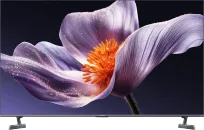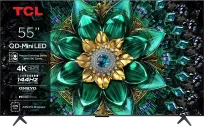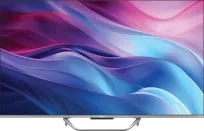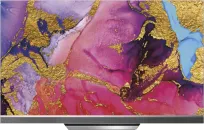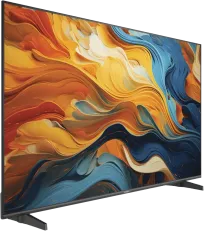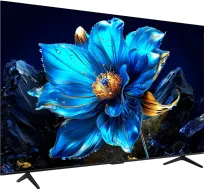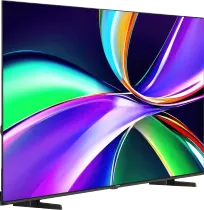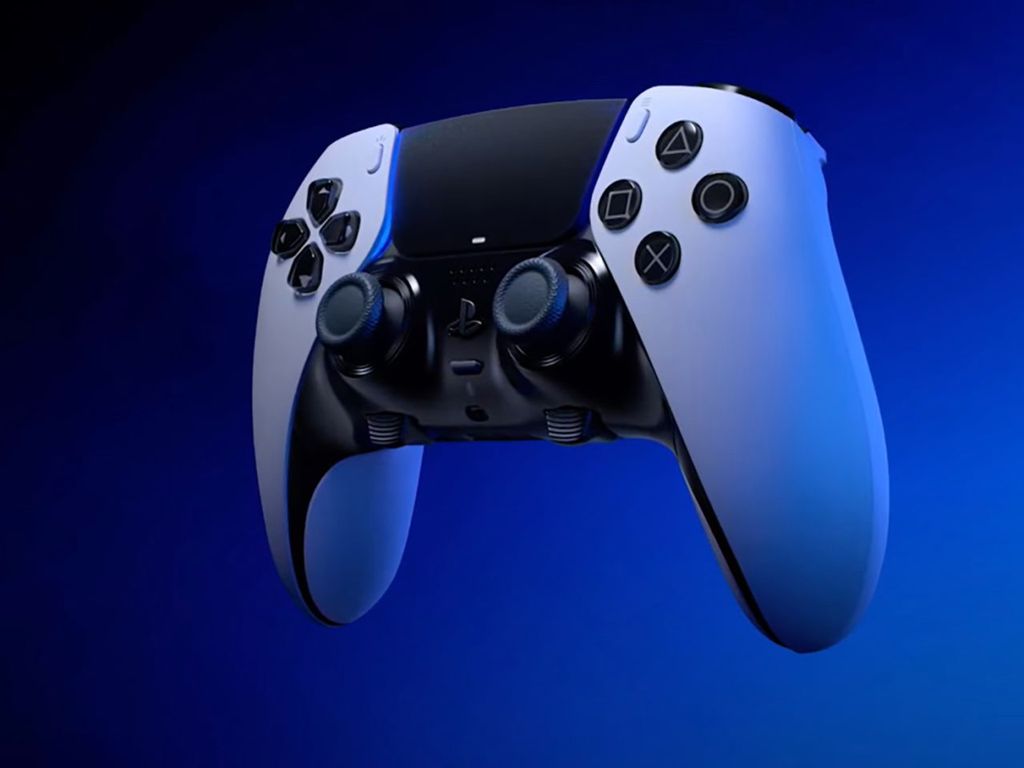
Portal RTINGS published some time ago a test of the Samsung QN90F television, thus confirming the rumours circulating for several weeks: the TV division at Samsung Electronics is making significant cuts and trying to create more affordable televisions. The QN90F is the direct successor to our highly rated model QN90D/QN92D – one of the best 4K MiniLED televisions from last year. The most important changes? This time Samsung has applied a matte panel! Yes, you read that correctly – the matte finish is coming to standard 4K models, not just to the top-end 8K versions or lifestyle models like The Frame.
Samsung is consistently implementing this “innovation” in subsequent series – but has this change benefited the QN90F? Let’s check the initial test results together and see what the new representative of the Neo QLED series has gained and what it has lost.
Matte panel – the biggest change in QN90F
The biggest and most noticeable change compared to its predecessor is the use of a new matte panel, very similar to what we know from lifestyle models like The Frame or this year's Samsung OLEDs S95D and S95F. It has a special anti-reflective coating that remarkably suppresses reflections of light, especially those point sources – from lamps, windows, or the sun. This is a great solution for people who cannot stand the sight of their own lamp reflecting on the screen – the television looks much cleaner and clearer in bright rooms. But – as always – there are trade-offs.
As we have stated many times in our reviews, the matte coating also has its downsides. In typical daytime use, colours can seem less saturated, and black can lose its depth, especially when watching on very bright days. This is a compromise that you need to consider. You have to decide what you prefer.


Contrast – still good, but... it's a clear step back
Another significant change in the QN90F unfortunately does not inspire much optimism. This time we are dealing with something that can be linked to budget cuts and simplification of construction – it concerns the weaker contrast caused by a smaller number of local dimming zones.
As a reminder – in our tests, last year's QN90D was able to achieve almost infinite contrast in certain scenes, comparable to OLEDs. Of course, we are still talking about MiniLEDs, so there were typical limitations, such as slightly lower brightness of very small, bright objects – but overall the contrast was absolutely remarkable.
In the case of the QN90F, we unfortunately have to reckon with a certain downgrade. RTINGS indicates that although the contrast is still very good for an LCD television with local dimming, it is clearly worse than its predecessor. Most users will probably still be satisfied – but if someone was counting on a level similar to that of an OLED or at least comparable to its predecessor, they may unfortunately feel a slight disappointment.
QLED or not QLED? That is the question
Although the Samsung QN90F still belongs to the QLED family, and thus utilises quantum dot technology, which theoretically should enhance colour saturation and range, in practice it unfortunately performs worse than its predecessor. The dots are there, but the coverage of the DCI-P3 colour gamut is only about 85%, which – for a television of this class – is merely an average result. By comparison, the QN90D achieved around 95%, meaning this year’s model has lost as much as 10 percentage points! For the average viewer, this may not be a dramatic difference, but those hoping to fully utilise the potential of HDR or seeking vibrant, rich colours may feel a certain disappointment once again.
QN90F will probably be a hit for gamers!
Samsung QN90F, like most Samsung televisions, has been designed with gamers in mind. It features a panel with a refresh rate of up to 165 Hz! Of course, primarily PC gamers will benefit from this feature, but it is a nice update! Additionally, we have the well-known and beloved motion smoother, Motion Game Plus, which also works in games! In terms of responsiveness and speed, the QN90F looks really promising. It also comes equipped with the Xbox Game Pass app, allowing cloud gaming without a console and without needing to install games. All you need is a controller and a subscription, just like in last year's Samsung models.
However – and here’s the catch – the editorial team at RTINGS noticed some issues with contrast in "Game" mode. The blacks lose depth, and the contrast itself is noticeably weaker than in other modes. What does this mean? It's hard to say – perhaps Samsung will improve it with an update, or it may simply be another limitation compared to its predecessor.
Was it worth cutting Samsung?
Looking at the QN90F, it's hard not to get the impression that Samsung has intentionally "slimmed down" this model compared to its predecessor. Fewer dimming zones, lower contrast, weaker colour coverage – these are not random decisions. It's a pity, because the QN90D was one of the best MiniLEDs on the market, with parameters so good that it realistically competed even with OLEDs, at least for some customers.
And perhaps this is exactly where the problem lies. Last year, the QN90D often cost more than its OLED counterpart – the S90D model, and as we know: at a similar price, most people simply choose an OLED. The QN90F thus seems to be a step towards "complementarity" – meant to supplement the offering rather than rival its own OLEDs. It’s also possible that Samsung is trying to better prepare itself for the growing offensive from brands such as TCL or Hisense, which are aggressively entering the market with increasingly better (and cheaper) MiniLEDs. The QN90F could therefore be a strategic response – a more accessible model, albeit less spectacular, but with a unique matte display.
Is this a good decision? It's hard to say. If the price is indeed more attractive than last year, the television could find quite a few buyers. But if the differences in quality turn out to be too great and the price remains at the same level as the QN90D, customers might look towards the competition from China.
Meanwhile, we invite you to our market analysis of Samsung's sales models (and more) – perhaps it’s the perfect opportunity to snap up a television from 2024 at an exceptionally attractive price!
 Katarzyna Petru
Katarzyna Petru

